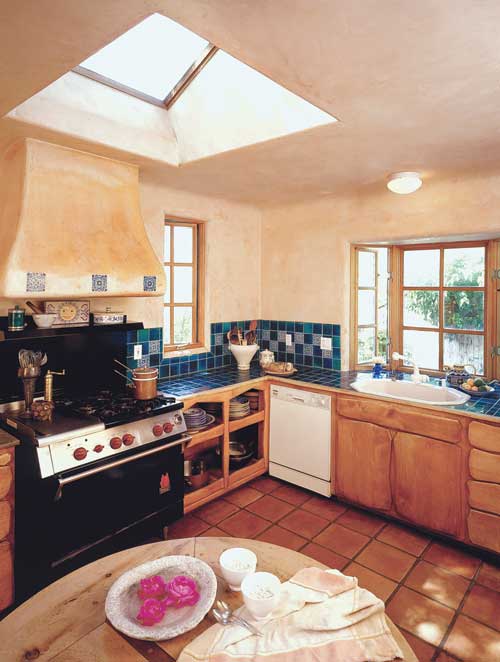Courting Nature in Design
Learning from the land
The Philadelphia firm KieranTimberlake engaged in biophilic design at the site level in the West Campus Residential Initiative at Cornell University in upstate New York. The project includes five residence halls separated by courtyards and one-story, glass-walled dining pavilions with vegetated roofs. Principal James Timberlake, FAIA, explains the site design and green roof both express biophilia. The buildings extend east-west, echoing geologic forms of the local hills and valleys, and this configuration optimizes interior daylight and natural ventilation. Because the buildings are west of the main campus, students walk to class toward the sunrise in the morning and back home again toward the sunset, connecting them to the natural movement of the sun and to views of the surrounding hills.
 |
Architect Carol Venolia designed a biophilic kitchen with daylight, views, and earthy materials. Photo © Barbara Bourne Photography |
Â
The pavilion roofs, though not physically accessible, are visible from the upper floors of the residence halls, becoming "a fifth facade, a continuation of the landscape, an extension of the idea of college green," says Timberlake. Growing on the extensive roofs are native plants, which have encouraged the return of indigenous birds. So, while reducing runoff and insulating the space below, the green roofs are also augmenting the students' visual and auditory connections with nature.
In his chapter for  Biophilic Design: The Theory, Science, and Practice of Bringing Buildings to Life, KieranTimberlake partner Stephen Kieran, FAIA, urges us to embrace biophilia as a modern aesthetic. He asks, rhetorically, "Has evolution taken us so far afield that the resonance with nature that is at the very heart of biophilia has to be relearned before we can have an aesthetic response to the natural world as represented through the artifice of our shelters, our architecture?"









